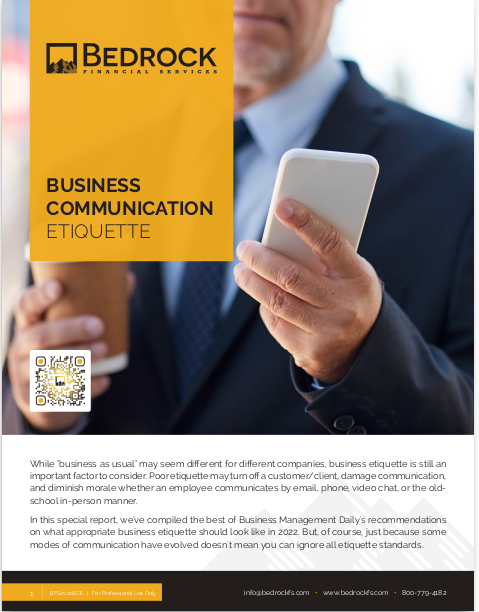Key Takeaways
-
Simply having testimonials isn’t enough—they must be strategically placed, emotionally resonant, and tied to client outcomes to influence today’s skeptical client.
-
In 2025, testimonials should reflect relevance, specificity, story, and emotional value—not just praise or general satisfaction.
Testimonials Are Not Proof Anymore—They’re Expectations
You already know that testimonials carry social proof. But in 2025, that alone isn’t impressive. Clients now expect to see them. The presence of testimonials doesn’t differentiate you—it simply meets the minimum credibility threshold.
That means your old strategy of sticking a few quotes at the bottom of your website or social media page isn’t earning the trust you think it is. It may even make you look outdated. You need to shift your approach from passive display to active storytelling.
To compete in a highly saturated market, testimonials must now be woven into the experience of your brand—across platforms, formats, and stages of the client journey.
What Modern Clients Look For in Testimonials
A generic “great service, highly recommend” doesn’t resonate anymore. Today’s clients are more discerning. They want testimonials that feel personal, relatable, and narratively rich.
Here’s what they’re really looking for:
-
Relevance: The person in the testimonial should reflect their own background, concerns, or financial situation. If they’re a newly self-employed freelancer, a testimonial from a retired executive may feel out of touch.
-
Specificity: Instead of vague praise, prospects want to hear what problem was solved, what outcome was delivered, and how long it took. Measurable results with a clear timeline are powerful.
-
Emotionally driven outcomes: Numbers are nice, but feelings are what stick. What did working with you feel like? Was there peace of mind, relief, empowerment, or even excitement?
-
Authenticity over polish: Clients are skeptical of anything that sounds like a script. Raw, honest, and specific testimonials build deeper trust than overly polished reviews.
This isn’t about replacing data with drama. It’s about humanizing the result and showing prospective clients the transformation that could be possible for them.
Where Most Professionals Are Still Getting It Wrong
Even in 2025, testimonial usage is falling flat for several reasons:
-
Burying testimonials on hard-to-navigate or outdated testimonial pages
-
Using outdated or irrelevant reviews that no longer reflect your services or client base
-
Failing to match testimonials with specific services or product offerings
-
Not obtaining permission to reframe or edit for grammar, clarity, or presentation
-
Forgetting to localize—using a quote from a retiree in Texas when your target audience is in the Northeast or a different demographic entirely
Even if you have dozens of testimonials, if they don’t reflect your current client base or align with your most in-demand services, they’re just background noise. In fact, they might even dissuade potential clients who feel like the messaging isn’t speaking to them.
How to Create Testimonials That Actually Convert
You don’t need more testimonials—you need better ones. You need to start thinking of them as modular storytelling assets that support conversion at multiple points in your funnel.
1. Curate for Specific Services
Clients are not buying your brand—they’re buying solutions. So if you offer retirement income strategies, don’t just show testimonials praising your “knowledge.” Show testimonials describing how you helped someone structure withdrawals over 30 years without sacrificing lifestyle or paying excessive taxes.
Action: Categorize your testimonials by service line, and insert them contextually throughout your website, not just in a single “testimonials” page. On your retirement page, show retirement stories. On your small business page, show business-owner transformations.
2. Use the “Before, During, After” Format
Structure your testimonials like micro-case studies:
-
Before: What were they struggling with?
-
During: What did you do and how did it feel?
-
After: What changed in their financial life?
This structure invites empathy and makes the reader project themselves into the story. Done well, it transforms passive readers into active participants in the imagined journey.
3. Pair With Visuals
In 2025, visual engagement is more important than ever. A testimonial with a name and block of text feels flat. But a quote paired with:
-
A professionally designed photo (not a selfie)
-
An infographic showing financial impact or timeline
-
A short video snippet (30–60 seconds)
-
A visual backdrop relevant to their story (home purchase, retirement, business launch)
…drives attention, memory retention, and trust. Keep it compliant, but make it compelling.
4. Get Fresh Testimonials Every 6 Months
Testimonial relevance has a shelf life. What was true in 2023 might feel outdated in 2025. Services evolve. So do client priorities and language.
Set a system to:
-
Request testimonials automatically after major client milestones
-
Refresh your testimonial bank bi-annually—clean, tag, and retire outdated ones
-
Archive older ones, but don’t showcase them prominently unless timeless and still applicable
5. Focus on Micro-Segments
Not all testimonials should be aimed at the general population. If you serve:
-
Pre-retirees
-
Public sector employees
-
Small business owners
-
Women in transition
-
Military families
…you should build testimonial pools for each group. When a potential client visits your site, your content—and your social proof—should feel like it’s speaking directly to them and their exact season of life.
Where to Place Testimonials in 2025
Don’t rely on one testimonials page anymore. Today’s digital attention span rewards strategic placement. Use testimonials like punctuation throughout your content, not as an appendix.
Homepage
Use a visual, emotionally resonant testimonial near the top fold to establish trust before the user scrolls. This is your first handshake—make it count.
Service Pages
Every service description should include a related testimonial, framed as “How this helped someone like you.” This bridges your claims to real results.
Email Campaigns
In drip sequences or follow-up emails, a single sentence testimonial can reinforce your credibility without sounding like a pitch. Bonus: Rotate testimonials based on where the prospect is in your sales funnel.
Social Media
Instead of “throwback” posts, use carousel stories, video reels, or designed quotes that highlight testimonial clips or quotes in real-time. Add captions, link to a story, and always use branding that matches your other marketing.
Proposal or Onboarding Docs
Include testimonials in your new client welcome kits or PDF proposals—especially ones that reflect the journey they’re about to take. It’s an excellent time to affirm their decision and reduce buyer hesitation.
Compliance Still Matters
The 2025 regulatory environment still requires:
-
Client permission to use any testimonial publicly, whether written or video
-
Disclosure of compensation if you incentivize the testimonial in any way (gift cards, discounts, etc.)
-
Avoiding misleading edits that change the meaning, sequence, or context of the original feedback
Don’t cut corners. A testimonial that’s improperly used can damage trust faster than almost anything else. Be transparent and respectful, and you’ll build trust that actually lasts.
How to Ask for Better Testimonials
If you’re still sending a generic “please leave a review” link, you’re missing out on the gold. Instead of quantity, focus on quality—invite a story, not just approval.
Ask questions like:
-
“What were you worried about before we started working together?”
-
“What surprised you most about the process or result?”
-
“What changed for you after we met?”
-
“If someone is on the fence about working with me, what would you say to them?”
Structure your outreach with intent. You’re not just looking for approval—you’re curating a story that speaks directly to future clients’ questions, fears, and hopes.
The Right Time to Request Testimonials
Timing matters. The most emotionally rich and action-driven testimonials come when a client has just:
-
Achieved a financial goal
-
Expressed gratitude
-
Received clarity about their plan or options
-
Had a breakthrough conversation with you
Automate your CRM to flag these milestones. That way, you’re not chasing feedback—you’re capturing it at the emotional peak of their experience.
Bonus tip: Let them choose their preferred format—some will prefer writing, others audio, and some will be happy to record a short video with guidance.
Don’t Let Great Testimonials Go to Waste
If you only post your best quotes once and forget them, you’re wasting their power. Testimonials are evergreen—but they need rotation, repackaging, and reinforcement.
Rotate testimonials every month across platforms. Change up visuals and copy formatting. Keep them fresh.
Repurpose them in:
-
Webinars and online trainings
-
Slide decks and pitch presentations
-
Blog sidebars and in-line article blocks
-
Email footers and PS lines
-
Postcard campaigns or quarterly mailers
Let them live in multiple forms, continuously reinforcing the promise of your work.
2025 Is the Year to Stop Treating Testimonials Like Filler
If you want your testimonials to work harder for your business, you have to treat them like strategic assets—not leftover praise to stick on a brochure or an afterthought to a campaign.
Use them as part of your messaging architecture, not decoration. Build a testimonial content calendar. Integrate them into client journeys. Track their performance.
You’ll gain credibility, resonance, and clarity—all without saying a word yourself.
Make Your Marketing Actually Sound Like Clients Trust You
There’s no need to rely on manufactured urgency when your real clients are willing to speak to your impact. Let their voices prove your value.
Start treating testimonials as proof of promise—not just past success. And if you’re ready to upgrade not just your testimonial game but your entire marketing approach, we can help.
At Bedrock Financial Services, we support professionals like you with smart CRM tools, automated marketing systems, and messaging support that actually converts. Sign up today to see how we can help you grow with integrity.







